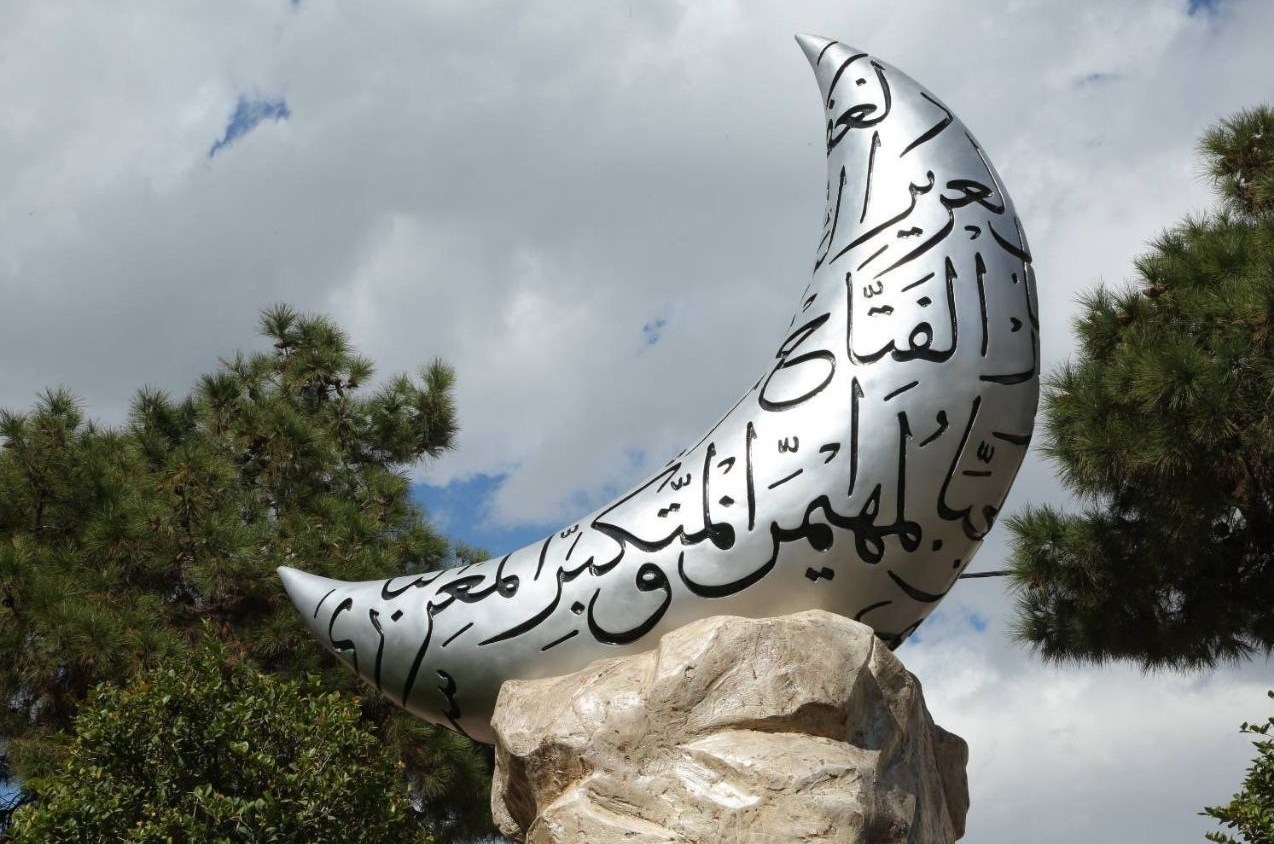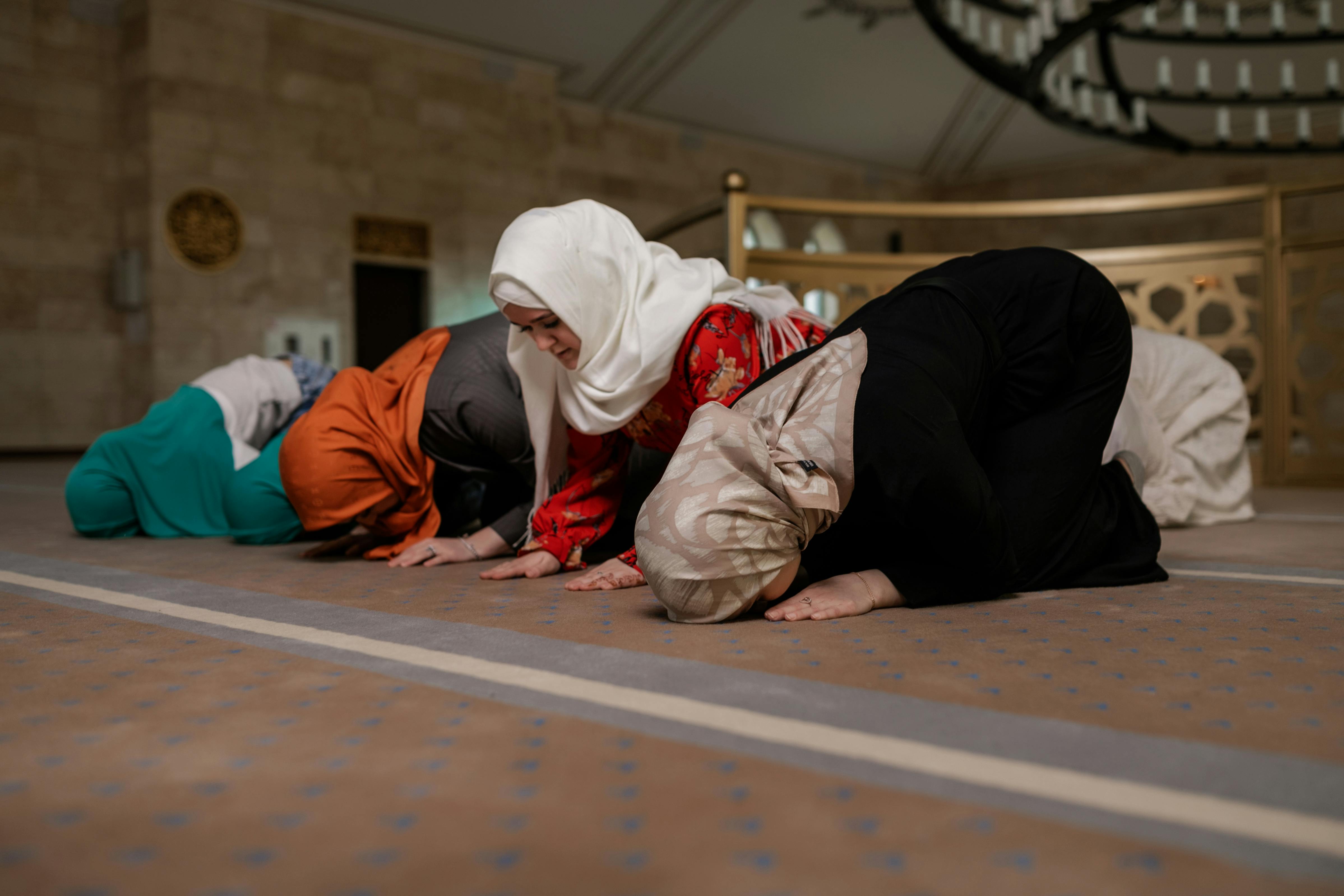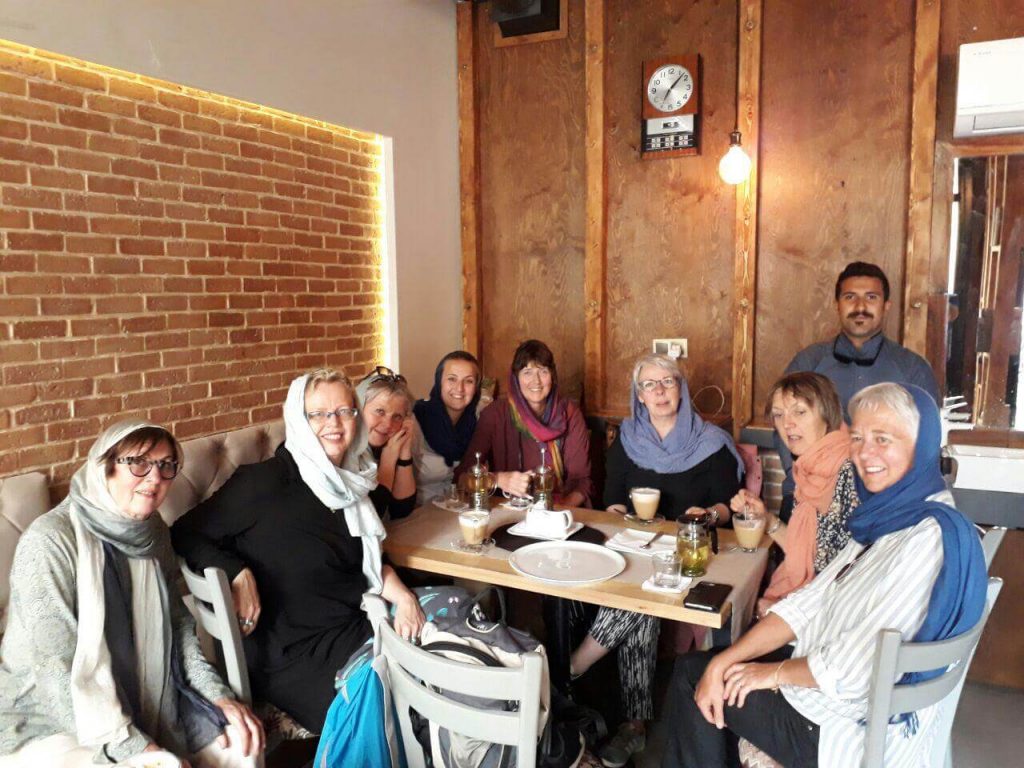Ramadan, the ninth stretch of the Islamic calendar, represents a period of deep spiritual contemplation, abstaining from food and drink, and a strong sense of community for followers of Islam across the globe. In Iran, a nation with a deep well of cultural and faith-based history, this special month is marked by distinct customs and ways of doing things that really show the country's devotion and its warm welcome to others, too it's almost a hallmark of their spirit.
This sacred stretch of time, observed by Muslims everywhere, including those living in Iran, Saudi Arabia, and Malaysia, holds a truly significant place in their lives. For about thirty days, people who follow Islam choose not to eat or drink anything from the first light of morning until the sun goes down. But, as a matter of fact, Ramadan is much more than just going without food and drink; it's a time for quiet thought, personal improvement, and acts of kindness, you know, a sort of spiritual spring cleaning.
Getting a feel for what Ramadan means in Iran, which is observed during the ninth stretch of the Islamic calendar, holds a lot of cultural and faith-based importance there. This holy month, characterized by going without food and drink from dawn until dusk, is a period for quiet reflection, building stronger community ties, and growing closer to one's faith. For visitors, grasping the true heart of Ramadan in Iran can, in some respects, really make their trip a much richer experience, offering a deeper look into local life.
- Aditimistry Sex Videos
- Karlye Taylor Leaked Onlyfans
- Diva Flawless Pron Video
- Honeytoon Teach Me First
- Kenny Chesney Gay
Table of Contents
- The Spirit of Ramadan in Iran
- What Does Ramadan Mean for People in Iran?
- How Do People in Iran Mark the Holy Month?
- Ramadan and the Quran - A Special Connection in Iran
- When Is Ramadan in Iran for 2025?
- How Do Visitors Experience Ramadan in Iran?
- Observing Prayer Times in Iran During Ramadan
- Shared Observances of Ramadan Across Countries
The Spirit of Ramadan in Iran
Ramadan, which people in Iran often say as "Ramazan," is a very significant time for Muslims there, and it is observed as a stretch of time for going without food, for prayer, and for thinking deeply about one's faith. This month, the ninth one in the Islamic calendar, holds a place of honor as the holiest period in Islam, really. It's a time when many people feel a renewed sense of purpose and a connection to something bigger than themselves, basically.
The essence of Ramadan goes beyond just the physical act of abstaining from food and drink. It's a period meant for people to really look inward, to consider their actions, and to try to be better individuals. In Iran, this idea of self-improvement and kindness is very present, you know, it's almost in the air. People strive to make things better around them and to keep away from anything that might cause them to feel regret or guilt, which is a powerful motivator for many.
The cultural richness of Iran adds a distinct layer to the observance of Ramadan. There are specific traditions and ways of doing things that have been passed down through generations, making the experience quite particular to the country. These customs show a deep commitment to faith and a wonderful sense of giving and welcoming others. So, you see, it's not just a religious observance; it's also a cultural expression, too, in a way.
- Read Teach Me First Online Free
- Jason Luv Eva Elfie
- Ellie The Empress Onlyfans Leak
- Pepper Ahs Real Life
- Undresser Ai
What Does Ramadan Mean for People in Iran?
For those who follow Islam in Iran, Ramadan truly represents a profound time. It's a period of personal devotion and collective practice that shapes daily life for about a month. The central practice, of course, involves going without food and drink from the first hint of daylight until the sun fully disappears below the horizon, every single day. This practice, known as fasting, is a way to feel empathy for those who are less fortunate and to build self-control, too, it's a real test of will for some.
Yet, the meaning of Ramadan extends far beyond simply not eating or drinking. It's a call to reflect on one's spiritual journey and to seek personal betterment. People are encouraged to grow in their faith, to practice patience, and to show kindness to everyone they meet. This means a focus on good deeds, helping others, and trying to avoid any behavior that might be considered harmful or negative, you know, a general push for goodness.
The month also encourages a stronger sense of togetherness. Families often gather for meals before dawn and after sunset, and communities come together for special prayers and events. This shared experience creates a powerful bond among people, strengthening relationships and fostering a collective spirit of faith and mutual support. It’s a period when the ties that connect people are, in some respects, really felt more deeply.
How Do People in Iran Mark the Holy Month?
The marking of the holy month in Iran involves a series of practices that are both personal and communal. The daily routine shifts quite a bit, with meals happening at specific times outside of daylight hours. The meal before dawn, called Sehri, is eaten to provide energy for the day's fast, and it's often a quiet, family affair. Then, after the sun sets, the fast is broken with a meal known as Iftar, which is typically a time for gathering with family and friends, very often a joyous occasion, you know, a real celebration of the day's end.
Beyond the meals, there's an increase in spiritual activities. Many people spend more time in prayer, reading from the Quran, and engaging in acts of giving to those in need. Mosques often see more people attending for special evening prayers, which bring communities together in shared devotion. This heightened focus on faith and charity is a core part of how the month is observed, basically, it's what defines the period for many.
There are also unique cultural elements that come into play. Certain foods and drinks become especially popular during Ramadan, prepared for the Sehri and Iftar meals. The atmosphere in towns and cities can change, with a quieter feel during the day and a more lively, social feeling after sunset as people gather. These traditions, passed down through generations, really give Ramadan in Iran its own special flavor, you know, a distinctive touch.
Ramadan in Iran - Daily Rituals and Traditions
The daily rituals during Ramadan in Iran are quite structured, yet they also allow for personal expression of faith. Each day begins with the Sehri meal, which is eaten before the first light appears. Families wake up early to share this meal, making sure they have enough sustenance to last until evening. This early morning gathering is, in a way, a quiet moment of togetherness before the day's spiritual efforts begin.
Throughout the day, people engage in their regular activities but with the added layer of fasting. This means no food or drink, and a focus on good behavior and avoiding negative thoughts or actions. It's a time for patience and self-discipline. As the day progresses, there's an anticipation for the evening, when the fast will finally be broken, you know, a quiet longing for the moment of Iftar.
The breaking of the fast, Iftar, is a moment of celebration. It often starts with something simple, like a date and a glass of water, before a larger meal is shared. These meals are often communal, bringing together family members, neighbors, and friends. There's a strong sense of hospitality, with people often inviting others to share their Iftar. This shared meal, you see, really strengthens community bonds and fosters a feeling of warmth and connection.
Ramadan and the Quran - A Special Connection in Iran
Ramadan holds a truly special place because it is the month when the first verses of the Quran, the holy book of Islam, were revealed to Prophet Muhammad. This event gives the month a profound spiritual weight, making it a time for increased reading and study of the Quran. Many Muslims in Iran, and elsewhere, try to complete a full reading of the holy book during this period, you know, a dedicated effort to connect with its teachings.
The last third of Ramadan is seen as a particularly holy period, because it marks the time when those initial verses were made known. This part of the month is considered especially blessed, and people often increase their acts of worship and devotion during these final days. There's a heightened sense of spiritual urgency and a desire to make the most of this sacred time, basically, to draw closer to their faith.
This connection to the Quran means that the month is not just about abstaining from food, but also about nourishing the soul through divine words. It's a time for reflection on the messages within the Quran and how they can be applied to one's life. This focus on scripture helps people to grow in their understanding and to deepen their personal faith, which is, in some respects, a central aim of the month.
When Is Ramadan in Iran for 2025?
For the year 2025, Ramadan in Iran is expected to begin around February 28 and come to a close on March 30. These dates are based on the sighting of the crescent moon, which is the traditional way to determine the start and end of Islamic months. The observance will last for approximately thirty days, a stretch of time dedicated to going without food, offering prayers, and engaging in spiritual devotion, you know, a full month of dedication.
The exact start and end times for Ramadan can vary slightly from one place to another, as they depend on the actual moon sighting. However, calendars like the Iran Ramadan Time 2025 calendar provide very accurate timings for Sehri and Iftar. These calendars are a great help for Muslims to observe the holy month and to plan their daily fasting schedule, basically, they make it easier to follow the practices.
Having these precise timings is very important for those who are observing the fast. It helps them know exactly when to start their fast at dawn and when they can break it at sunset. This careful planning ensures that the spiritual practice is followed correctly and respectfully. So, you see, the moon sighting and the accurate calendars play a very practical role in the daily lives of people during this time.
How Do Visitors Experience Ramadan in Iran?
With the growth of the tourism industry, the question of travel to Iran during Ramadan has become something many visitors think about. People often wonder how they should behave during this period and whether visiting Iran at this time is a good idea in the first place. This curiosity has even led to surveys of comments on travel platforms like Lonely Planet and TripAdvisor, showing that it's a common topic of discussion, basically, people are looking for guidance.
For tourists, understanding the local customs during Ramadan is quite helpful. While non-Muslims are not expected to fast, it is generally considered respectful to avoid eating, drinking, or smoking in public places during daylight hours. This shows consideration for those who are observing the fast. The atmosphere can be a bit quieter during the day, but after sunset, cities often become very lively as people gather for Iftar meals and social activities, you know, a real shift in mood.
Experiencing Ramadan in Iran as a visitor can offer a unique cultural insight. It provides a chance to see a different side of the country's daily life and to witness the deep faith and community spirit of its people. While there might be some adjustments to make regarding meal times or public conduct, many visitors find the experience to be very enriching, offering a deeper connection to the local way of life, too it's almost an immersive experience.
Ramadan in Iran - Tips for Tourists
When visiting Iran during Ramadan, a few simple considerations can make the experience smoother and more respectful. It's generally a good idea to dress modestly, which is a common practice in Iran anyway, but perhaps even more so during this holy month. This shows respect for the local culture and religious observances, you know, a thoughtful gesture.
Regarding food and drink, while you might find some restaurants or cafes open, especially in hotels or areas catering to visitors, it's best to be discreet if you are eating or drinking in public during the fasting hours. Many local eateries will be closed during the day and will open up for Iftar in the evening. Planning your meals around these times can be helpful, basically, adjusting to the local rhythm.
Public transport and shopping hours might also be a bit different during Ramadan, with some services operating on a modified schedule. It's a good idea to check these things beforehand, especially if you have specific plans. Overall, approaching the visit with an open mind and a willingness to observe and respect the local traditions will make for a very positive experience, which is, in some respects, the best way to travel.
Observing Prayer Times in Iran During Ramadan
For Muslims in Iran, observing the daily prayer times, also known as Salat times, is a fundamental part of Ramadan. These prayer times are set according to the position of the sun and change slightly each day. There are five daily prayers: Fajr (dawn), Duhr (midday), Asr (afternoon), Maghrib (sunset), and Isha (night). During Ramadan, these times also mark the start and end of the daily fast, you know, they guide the entire day.
In cities across Iran, including Tehran and all other areas, prayer times are widely available. People can find these timings easily through various sources, such as local mosques, printed calendars, or even mobile applications. IslamicFinder, for example, shows very accurate and authentic timings for fasting, including Sehri and Iftar times, which is, in a way, a very helpful tool for many.
The call to prayer, known as Adhan, is heard from mosques throughout the day, reminding people of the prayer times. For those observing Ramadan, the Maghrib prayer time is particularly significant as it signals the moment to break the fast. This rhythmic structure of prayer throughout the day helps to keep people focused on their spiritual journey during this holy month, basically, it provides a constant reminder of faith.
Shared Observances of Ramadan Across Countries
Ramadan, the ninth month of the Islamic lunar calendar, is a profoundly significant period for Muslims all over the world, and this includes Iran. It commemorates the month during which the first verses of the Quran were revealed to Prophet Muhammad. This sacred month is marked by going without food from dawn until sunset, an increase in prayer, quiet reflection, and a strengthening of community ties, you know, a shared global experience.
While each country might have its own particular customs, the core practices and meaning of Ramadan remain the same across different lands. Muslims in places like India, Turkey, Pakistan, the UAE, Iraq, Afghanistan, Kuwait, Qatar, Morocco, Lebanon, Syria, and Bahrain all share in the fundamental observances of fasting, prayer, and charity. This shared experience creates a sense of unity among Muslims worldwide, basically, a universal bond.
The common thread of abstaining from eating and drinking from dawn to sunset for about thirty days is a powerful symbol of shared faith. However, as the provided text mentions, this month is not just about feeling hungry or thirsty. It's a time when people try to make everything better and stay away from guilt, focusing on personal and collective improvement. This universal pursuit of goodness is what truly connects the observances of Ramadan across diverse cultures and nations, which is, in some respects, a beautiful thing to witness.
Related Resources:



Detail Author:
- Name : Hailey Hessel Jr.
- Username : lindgren.heidi
- Email : austen.dietrich@hammes.com
- Birthdate : 2004-05-02
- Address : 3365 Gisselle Drives East Felipe, MO 66750-3619
- Phone : +1-769-677-4247
- Company : Flatley and Sons
- Job : Locker Room Attendant
- Bio : Esse sed iste atque voluptatem et rerum delectus. Repellendus ipsam libero pariatur mollitia recusandae harum incidunt. Id maxime dolores ut autem est at accusantium.
Socials
twitter:
- url : https://twitter.com/cheyenne2315
- username : cheyenne2315
- bio : Ut qui dolor molestiae odit doloremque. Beatae atque quaerat deserunt. Quaerat perspiciatis saepe non accusamus consequatur debitis doloremque eum.
- followers : 2517
- following : 670
instagram:
- url : https://instagram.com/cheyenne_dev
- username : cheyenne_dev
- bio : Incidunt vel impedit veniam dolores accusamus dolores. Vel pariatur veritatis expedita ex.
- followers : 6489
- following : 1747
tiktok:
- url : https://tiktok.com/@cheyenne_dev
- username : cheyenne_dev
- bio : A qui accusantium ratione minima et autem atque perferendis.
- followers : 882
- following : 1657
facebook:
- url : https://facebook.com/cheyenne.hammes
- username : cheyenne.hammes
- bio : Eos dolor incidunt deserunt doloribus.
- followers : 3296
- following : 1605